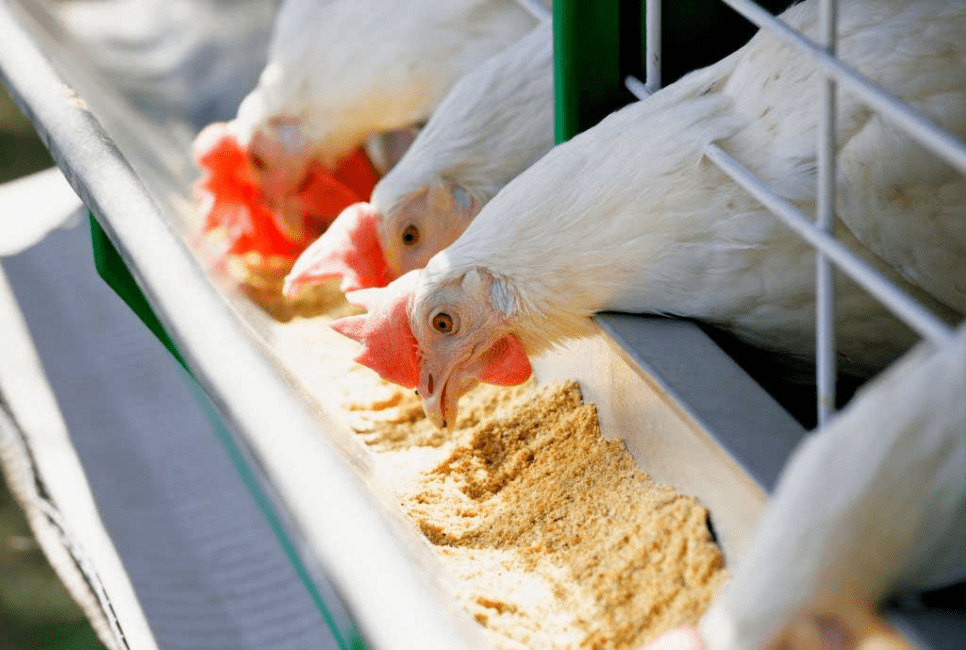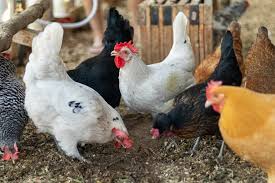How to Determine the Quality of your Poultry Feeds
Often times poultry farmers always want to know how they can know if a particular poultry feed is good or not for their poultry birds. Well things that are not good in a feed ranges from bad quality ingredients, contaminated ingredients and bad milling environment.
The best way to know the quality of your feed is to go for feed analysis and test for the contents of the feeds and for the possible microbes which may be present in the feeds.
This is due to the fact that handling a healthy poultry farming starts with what they are being feed with, and therefore, poultry testing should begin with the grains used in their feed that the chickens eat.
Checking for the levels of moisture, protein, fiber, and calcium phosphorous and other factors will ensure that the chicken are given the highest quality feed that will ensure they are healthy to encourage maximum performance and in return yield the expected profits for the poultry farmer.
As for where you can do your feed testing, well feeds are tested in the laboratory. There are some laboratories that can do this around and for other laboratories closer to you please consult your Vet. Doctor or an expert.
Also the cost of the test cannot be told precisely as It depends on the market forces at the time you are going for the test and the kinds of test you are doing. However it is always advisable you do the test through an expert as he/she will give you necessary follow-up.
Read Also: An Estimate of how much you will spend in feeding your birds
Poultry Feeds Evaluation
Feed evaluation is the testing of feed quality, providing information on the composition of feed or feed ingredients as well as their suitability for poultry. Poultry feed is made up of many ingredients, which are broadly grouped into providers of energy (fats, oils and carbohydrates), protein (amino acids), vitamins, minerals and product quality enhancement.
Typically, cereals such as wheat, barley, sorghum and maize will provide energy while soybeans, lupins, canola and peanuts provide protein. These ingredients are then combined in such a way as to provide the energy, protein, vitamin and mineral requirements for poultry through the process of feed formulation.
In order to know what amounts of these ingredients should be included in the diet, the ingredients are first evaluated, to see what nutrients they contain in what quantities.
After the diet has been prepared, it may also be necessary to evaluate the complete product, to determine its suitability for the class of poultry that will be fed (such as egg layers, meat chickens or breeders).
Feed evaluation is a key process in the poultry industry. Feed ingredients need to be tested in order to formulate the complete diet, and diets have to be evaluated to determine their suitability for poultry.
Evaluation provides different types of information, as required by nutritionists and farmers. In general, the range of tests that can now be performed is wide and it is now possible to obtain results rapidly.
Measures of Poultry Feeds Quality
Feeds and feed ingredients can be evaluated physically as well as chemically. The physical evaluation of feed mostly provides preliminary information on the quality of the material. It involves assessing physical qualities such as weight, colour, smell and whether the material has suffered from any contamination by other materials.
Chemically, feed is made up of water and dry matter. The dry matter contains organic and inorganic compounds. The organic part of feed is made of mainly carbohydrates, proteins, vitamins and fats and oils. The inorganic part is made of mineral elements, also known as ash.
Feed or feed ingredients can be analyzed to provide values of each of these components. Apart from obtaining values of chemical composition, the extent of utilization of these components by the bird, termed nutritive value, is also measured.
Read Also: How to source for Feeds for your Poultry Birds
How Poultry Feeds Quality is Measured

Feed quality is measured by chemically breaking up the food into the components mentioned above. In the industry, it is sometimes necessary to break down these large components into smaller analytical fractions. Thus, values of starch and the non-starch component (called fibre) of carbohydrates may be provided.
Proteins are made of amino acids, 10 of which must be present in poultry diets, so their amounts should be indicated during feed evaluation.
In the past, feed evaluation was a cumbersome process, requiring days to complete. However, newer equipment and procedures have been developed, which enable the rapid evaluation of most materials.
Of greater importance in feed evaluation is the response of poultry to particular feeds. This is regarded as the real nutritive value of the feed, and must be measured as part of feed evaluation.
Nutritive value does not necessarily entail animal growth or egg production. It gives information on how much of each of the fractions in feed, i.e. starch or energy, protein (amino acids), fats, minerals or vitamins, was used by the bird.
When feed is given to poultry, they are able to break down only a fraction of the feed and absorb it into the body for growth and egg production.
The rest is voided in faeces and urine, which are excreted together by poultry. The amount of nutrients retained by the bird is an indication of the nutritive value of the feed.
Importance of Poultry Feeds Evaluation

Feed evaluation is important because ingredients that belong to the same class contain different nutrients; for example, maize provides more energy than wheat while soybeans contain more proteins than lupins and canola. The same ingredient varies from one supplier to the other, and between years.
In drought years, cereals fill poorly and are therefore lower in quality. Most importantly, if feeds are not evaluated, it is not possible to tell if the material will be suitable for feeding poultry.
Feeding standards have already been set for different types of poultry, so the requirements for different nutrients must be met precisely.
It is possible, with the current state of knowledge, to predict poultry growth or egg production by modelling feed quality, type of housing, class of poultry and duration of feeding. The central key issue in these models is feed quality, which can only be obtained through feed evaluation.
Read Also: Complete List of High Fiber Foods you Should Know About









